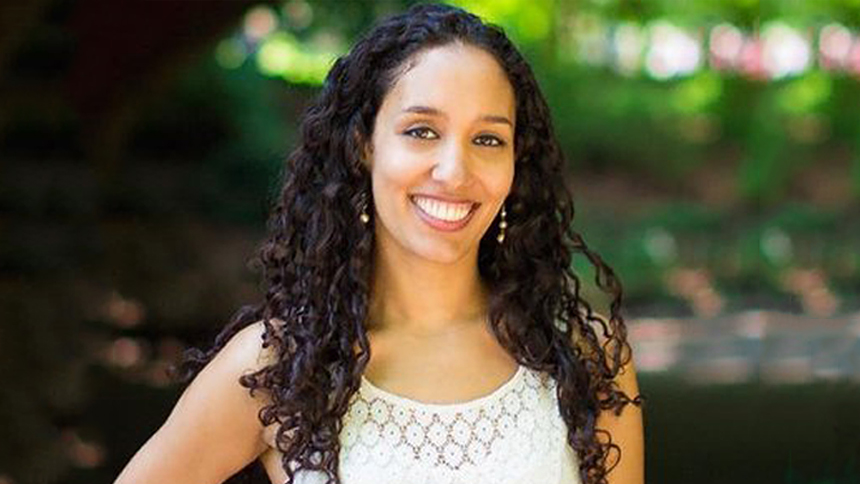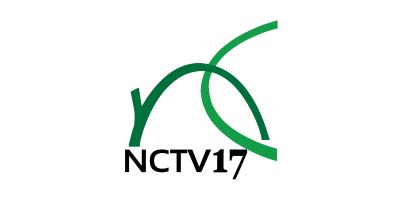English aficionado? Check. Manically meticulous? Double check. Spots typographical missteps on anything with a printed word? Check, check, check. Sounds like you have a promising career as a proofreader, buddy.
Not sure? Check out what one veteran proofreader says about a career combing through text, and then decide.
So, what exactly does a proofreader do?
People often confuse a proofreader with a copy editor. And who could blame them? The two are practically kissing cousins.
But there is a significant distinction: a proofreader ensures content is error-free. The job is done when a piece is free of even minor errors and has clear readability. There’s no rewriting and revising involved—at least, there shouldn’t be.
Corrections at the sentence and word level (should) have been made before the text lands in the proofreader’s lap.
“I see proofreading as reading a proof—analyzing it on a visual and content level for final changes after it’s evolved through its stages of revision,” said Mary Emma Koles, owner and founder of online editing company ink200, and owner and director of SpiderSmart Learning Centers, which offer lessons and workshops in editing, writing, and other areas.
A proofreader ensures content is free of typographical, grammatical, spelling, punctuation, syntax, formatting, and other errors.
This person notices the extra space after a period, the “their” when it should be “they’re,” and the compound adjective missing a hyphen.
The job is all about tweaking the syntax and diction in a piece to ensure the most fluid, original projection of the content possible, explained Koles.
What skills does a proofreader need?
“Patience for the tediousness that comes with fine-tuning every single aspect of every single word and line,” advised Koles. “Precision for the fine-tuning required in revising word-to-word, sentence-to-sentence, and paragraph-to-paragraph; and originality for the creativity each client deserves during every phase of revision.”
You should also be familiar with a style guide or two.
What about digital skills?
If you’re working on website content like blog posts, hyperlinking is important. But for pretty much everything else, knowing your way around Microsoft Word—get to know track changes—suffices, Koles said.
What does it take to excel as a proofreader?
The eyes of a hawk and an insane mastery of the English language, grammar, and punctuation.
Is this more of a freelance position, or do companies keep a proofreader on staff?
In general, landing a job is all about connections and what opportunities arise because of them.
“Some are serendipitous; others are hard-earned,” said Koles. “Freelance and consistent positions alike are out there for the taking; it’s all a matter of seeking new avenues to editing work and—of course—doing an exceptional job with every single piece you are given to polish and perfect!”
Who is a proofreader’s supervisor?
You’ll likely be checking in with an editor.
How can I break into proofreading?
Proofread your friends’ stuff (e.g., resumes, college essays) to get your feet wet.
Prepare a portfolio to show off your work. Then, try landing an editorial job that involves polishing prose at a smaller publication, publishing house, or website.
As with all jobs these days, having a basic competence across a variety of disciplines will make it easier to get hired. A good understanding of the copyediting process will help your proofreading prospects.
Proofreading tools and services in professional writing
Content has exploded in the digital age. Academic papers, manuscripts, and social media posts are omnipresent; proofreading tools have transcended from mere options to essential needs.
These tools, integral to online proofreading platforms, represent the final opportunity for writers to polish their work. They ensure the text is free from errors and inconsistencies—a crucial last step before any piece reaches the public eye.
Beyond automated tools, professional proofreaders bring expertise honed by certifications in various style guides such as APA, CMS, and AP. This combination of human skill and technological precision elevates proofreading, ensuring excellence in every written piece.
These proofreading services are not just about error checking; they play a pivotal role in preserving the originality of content. With plagiarism being a major concern in academic and professional writing, online proofreaders double as guardians of originality, safeguarding the writer’s integrity.
This is particularly vital for dissertations and other scholarly works where the authenticity of the author’s own work is paramount. Similarly, in professional tasks like email communication and LinkedIn articles, these tools ensure clarity and originality, underscoring the importance of authenticity in every word crafted.
The evolution and future of proofreading in the digital age
The scope of proofreading today extends far beyond traditional manuscripts and academic papers. In the era of social media, where platforms like LinkedIn dominate professional communication, the need for flawless writing is more pronounced than ever. Here, proofreading is a technical necessity and a key element in personal branding and professional representation.
As we look to the future, integrating AI into proofreading tools promises a significant evolution in the field. AI’s learning capabilities offer the potential for more context-aware proofreading, capable of handling various writing styles and formats with enhanced nuance.
Yet, this technological advancement doesn’t diminish the importance of professional proofreaders. Instead, it complements their expertise, allowing them to concentrate on the more subtle nuances of language and style.
The demand for precision in writing is only growing, and the collaboration between human expertise and AI efficiency is set to redefine the landscape of proofreading. This blend of traditional knowledge and cutting-edge technology is shaping a dynamic future for the field, where ensuring stylistic consistency and navigating the complexities of various forms of writing becomes more efficient and effective.
Dotting the I’s and Crossing the T’s: Your Proofreading Pathway
So, is your inner grammar guru ready to leap into the meticulous world of proofreading? It’s a universe where your obsession with missing commas isn’t just accepted – it’s celebrated. Imagine a career where your keen eye for the stray apostrophe or the elusive typo isn’t just a quirky trait but your superpower.
Remember, proofreading isn’t just about catching mistakes and grammatical errors; it’s about ensuring that every piece of text you touch reads like a well-oiled machine – smooth, efficient, and error-free. It’s a crucial final step in publishing, a silent guardian of grammar and style.
Whether you’re fine-tuning resumes or refining the next bestseller, each corrected error is a testament to your skill and an essential contribution to clear communication.
So, gather your style guides, sharpen your red pens (or ready your track changes feature), and prepare to embark on a journey that turns your love for language into a fulfilling career. In the world of words, proofreaders are the unsung heroes – and it sounds like you’re ready to join their ranks. Happy proofreading!
To find your next proofreading role, head to our media job board!
FAQs on Career Opportunities and Skills in Proofreading
Q: What is the job of a proofreader?
A: A proofreader’s job is to carefully review written content for errors in grammar, spelling, punctuation, and formatting. They ensure that the content is accurate, consistent, and free of any mistakes before it is published or printed.
Q: What is the main difference between a proofreader and a copy editor?
A: A proofreader focuses on ensuring content is free of punctuation errors without rewriting or revising, whereas a copy editor may engage in more substantial editing, including rephrasing and restructuring text.
Q: What are the key skills required to be a successful proofreader?
A: Essential skills include attention to detail, patience, precision, a strong grasp of grammar and punctuation, and familiarity with style guides.
Q: Can proofreading skills be beneficial in digital content creation?
A: Absolutely. Proofreading skills are crucial in digital content creation to ensure accuracy and professionalism in website content, blogs, and other online publications.
Q: What digital skills should a proofreader have?
A: Proficiency in Microsoft Word and Google Docs, particularly with track changes, and knowledge of hyperlinking if working on website content, are important digital skills for a proofreader.
Q: Is proofreading primarily a freelance role or an in-house position?
A: Proofreading can be both a freelance and an in-house position, depending on the opportunities available and connections in the industry.
Q: What are the first steps to becoming a proofreader?
A: Begin by proofreading for friends, creating a portfolio of your work, and seeking entry-level editorial jobs to gain experience. A good understanding of copyediting can also enhance proofreading prospects.
Q: How does one excel in a proofreading career?
A: Excelling in proofreading requires a keen eye for detail, strong command of the English language, and the ability to meticulously review and correct text at a granular level.
Q: Who typically supervises a proofreader in a professional setting?
A: In most professional settings, a proofreader is supervised by an editor who oversees the publication process.
Q: How important is familiarity with style guides in proofreading?
A: It’s very important. Being familiar with various style guides is essential for ensuring consistency and accuracy in formatting and style across different types of content.
Q: What kind of texts do proofreaders commonly work on?
A: Proofreaders work on a diverse range of texts, including books, articles, website content, resumes, and academic essays, ensuring each is error-free and well-presented.
Q: Can proofreading skills contribute to career advancement in other fields?
A: Yes, a good proofreader develops valuable skills in many fields, particularly those requiring clear and precise communication, such as writing, copy editing, publishing, marketing, and legal professions.
Q: How does understanding punctuation enhance a proofreader’s ability to edit manuscripts?
A: Understanding punctuation is crucial for a proofreader as it ensures clarity and correct syntax in manuscripts, enabling the content to convey its intended meaning accurately and professionally.
Q: What role does grammar play in maintaining clarity and originality in proofreading?
A: Grammar is fundamental in proofreading for maintaining clarity and originality, as it helps structure sentences correctly, ensuring the text is understandable, engaging, and free from ambiguity or plagiarism.
Q: Can AI-assisted proofreaders effectively detect and correct plagiarism in academic writing?
A: Yes. AI-assisted proofreaders are equipped with advanced algorithms to detect and correct plagiarism, ensuring academic writing is original and adheres to ethical standards.
Q: How important is a proofreader’s role in email communication for professional syntax and clarity?
A: A proofreader plays a vital role in email communication by ensuring syntax is correct and the message is clear, which is essential for professional, effective, and error-free communication.
Q: What are the benefits of using a proofreader familiar with APA style for academic manuscript editing?
A: A proofreader familiar with APA style ensures that academic manuscripts adhere to specific formatting and citation guidelines, enhancing the document’s credibility and academic integrity.
Q: How does a proofreader contribute to the clarity and precision of syntax in editing texts?
A: A proofreader enhances the clarity and precision of syntax by meticulously examining sentence structures, ensuring that the text is coherent, fluent, and effectively communicates the intended message.
Q: In what ways can proofreaders make corrections to improve the overall readability of a manuscript?
A: Proofreaders improve manuscript readability by making targeted corrections in grammar, punctuation, syntax, and style, thereby enhancing the flow, coherence, and engagement of the text for the reader.







